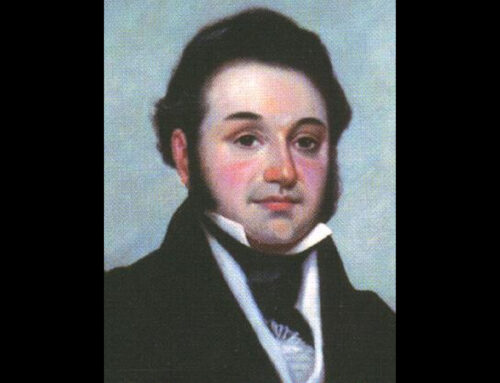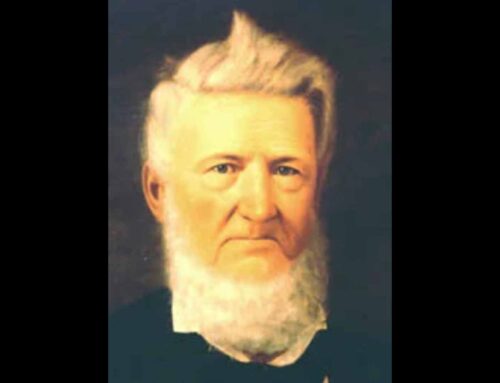Image of Sam Houston. Image courtesy of the Texas State Library and Archives Commission. Image available on the Internet and included in accordance with Title 17 U.S.C. Section 107.
Sam Houston: The Texas Revolution Hero and Architect of Texas Independence
Early Life and Career
Samuel Houston, born on March 2, 1793, in Rockbridge County, Virginia, is a pivotal figure in Texas history. After his father’s death, the Houston family moved to Tennessee in 1807. Seeking adventure, young Sam lived among the Cherokee Indians, adopted by Chief Oolooteka and given the name “Colonneh” or “The Raven.” This experience fostered his respect for Native American cultures, which influenced his future decisions.
Military Beginnings and Early Political Career
Sam Houston, the Texas Revolution hero’s military career, began during the War of 1812, serving under General Andrew Jackson. His bravery at the Battle of Horseshoe Bend earned him a promotion and Jackson’s admiration. After the war, Houston studied law and began practicing in Tennessee. His eloquence and leadership quickly propelled him into politics. By 1823, he was elected to the U.S. House of Representatives. In 1827, he became the governor of Tennessee. However, a personal scandal in 1829 led to his resignation and retreat to the Cherokee Nation in Arkansas Territory, where he advocated for Native American rights.
The Texas Revolution and Independence
In the early 1830s, Sam Houston, the Texas Revolution hero, moved to Mexican Texas and aligned himself with the cause of Texian independence. Appointed Major General of the Texian Army in 1835, he faced significant challenges, including an inexperienced and poorly equipped army. Despite these obstacles, Houston’s strategic leadership led to a decisive victory at the Battle of San Jacinto in 1836, securing Texas’ independence from Mexico. His rallying cry, “Remember the Alamo! Remember Goliad!” became a symbol of Texian resilience.
President of the Republic of Texas
Houston was elected the first president of the Republic of Texas in 1836. He focused on:
- Establishing a functioning government
- Securing international recognition
- Managing relations with Native American tribes and Mexico
Houston prioritized fiscal responsibility and diplomatic efforts, seeking peace treaties with Native American tribes and international support for Texas. His balanced approach to the contentious issue of Texas annexation to the United States helped pave the way for eventual annexation while maintaining Texas’ independence during his presidency.
Houston served as president from October 22, 1836, to December 10, 1838. After serving his first term, Houston adhered to the republic’s constitution, which prohibited consecutive terms. However, his influence remained strong, and he was elected for a second term in 1841, continuing to shape Texas’ future through his political and diplomatic efforts.
Annexation and U.S. Senate Career
Sam Houston, the Texas Revolution hero, played a crucial role in advocating for Texas’ annexation to the United States. In 1845, Texas was formally annexed, a testament to Houston’s vision. As a U.S. senator representing Texas, Houston was committed to preserving the Union and advocating for moderate policies. He opposed the extension of slavery into new territories, often putting him at odds with Southern colleagues. His principled stand emphasized the importance of Union stability.
Governorship and Secession Crisis
Elected governor of Texas in 1859, Sam Houston, the Texas Revolution hero, found himself at the forefront of the secession crisis. He vehemently opposed secession, believing it would lead to unnecessary bloodshed and harm the South. Despite his efforts, Texas voted to join the Confederacy in 1861. Refusing to take an oath of allegiance to the Confederacy, Houston was removed from office. His prophetic words about the impending conflict underscored his deep understanding of the nation’s fragile unity.
Legacy and Impact
Sam Houston, the Texas Revolution hero’s legacy, is etched in Texas and American history. His leadership during the Texas Revolution, role in establishing the Republic of Texas, and advocacy for annexation are foundational to Texas’ identity. Houston’s efforts to maintain peace with Native American tribes and his principled stand against secession highlight his commitment to pragmatic and humane policies.
The city of Houston, the largest in Texas, bears his name, along with numerous statues, schools, and landmarks across Texas and the United States. Houston’s life story embodies resilience, leadership, and dedication to principles, ensuring his name will be remembered for generations.
Key Takeaways About Sam Houston, the Texas Revolution Hero
- Early Life: Sam Houston was born in Virginia and moved to Tennessee, where he lived among the Cherokee Indians.
- Military Career: Distinguished himself in the War of 1812 under General Andrew Jackson.
- Political Career: Served as a U.S. Representative and Governor of Tennessee before moving to Texas.
- Texas Revolution: Led the Texian Army to victory at the Battle of San Jacinto, securing Texas’ independence.
- Republic of Texas: Elected the first president, focused on government stability, and international recognition. Served from 1836 to 1838 and re-elected for a second term in 1841.
- U.S. Senate: Advocated for Texas’ annexation and opposed the extension of slavery.
- Governorship: Opposed Texas’ secession, removed from office for refusing to join the Confederacy.
- Legacy: Remembered as a key figure in Texas and American history, with numerous honors bearing his name.
Conclusion
Sam Houston, the Texas Revolution hero’s life, was marked by his leadership, military prowess, and political influence, making him one of the most significant figures in Texas history. His contributions to Texas’ independence and his principled stand during the secession crisis highlight his enduring legacy. Houston’s story is a testament to resilience, leadership, and dedication to the greater good.



